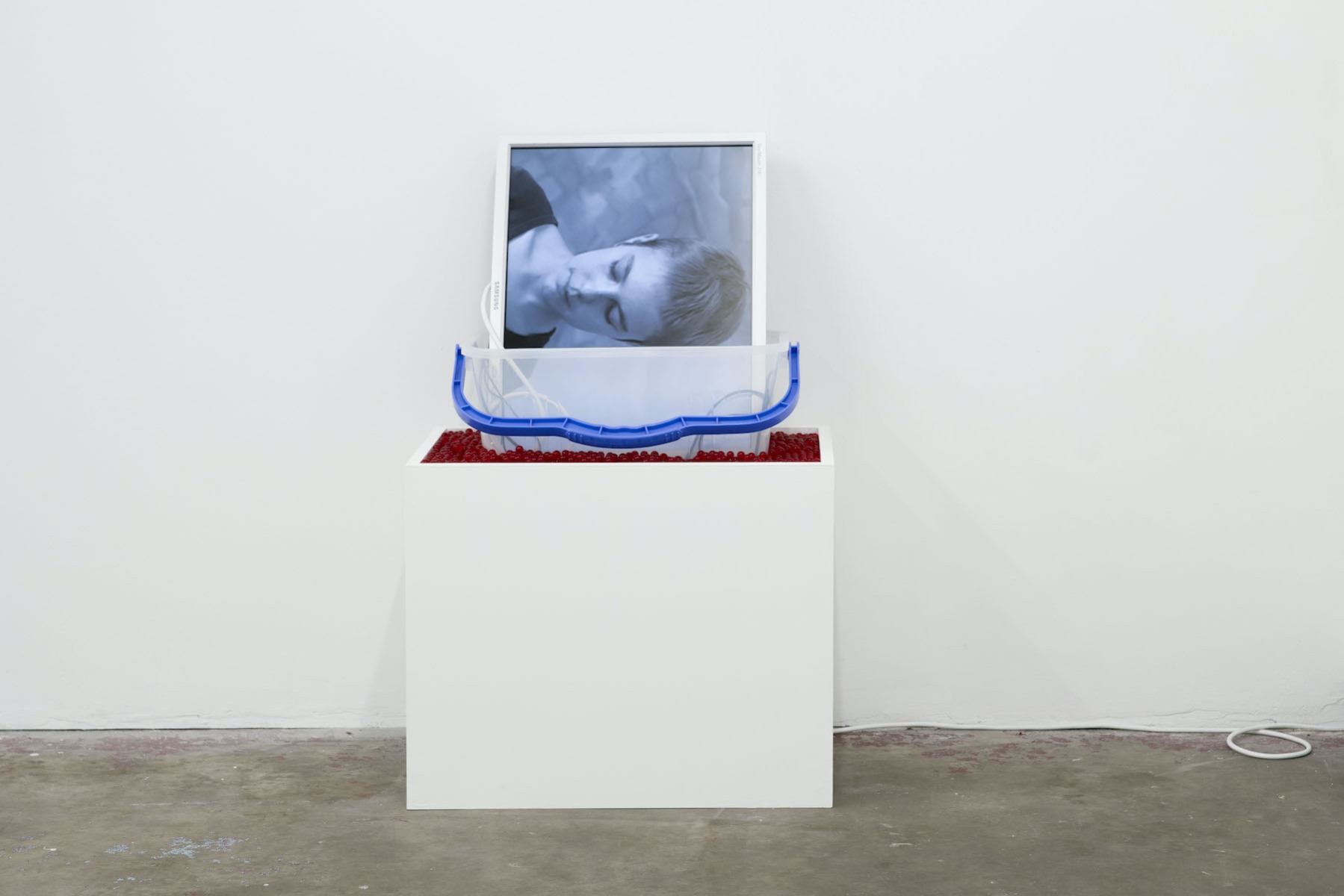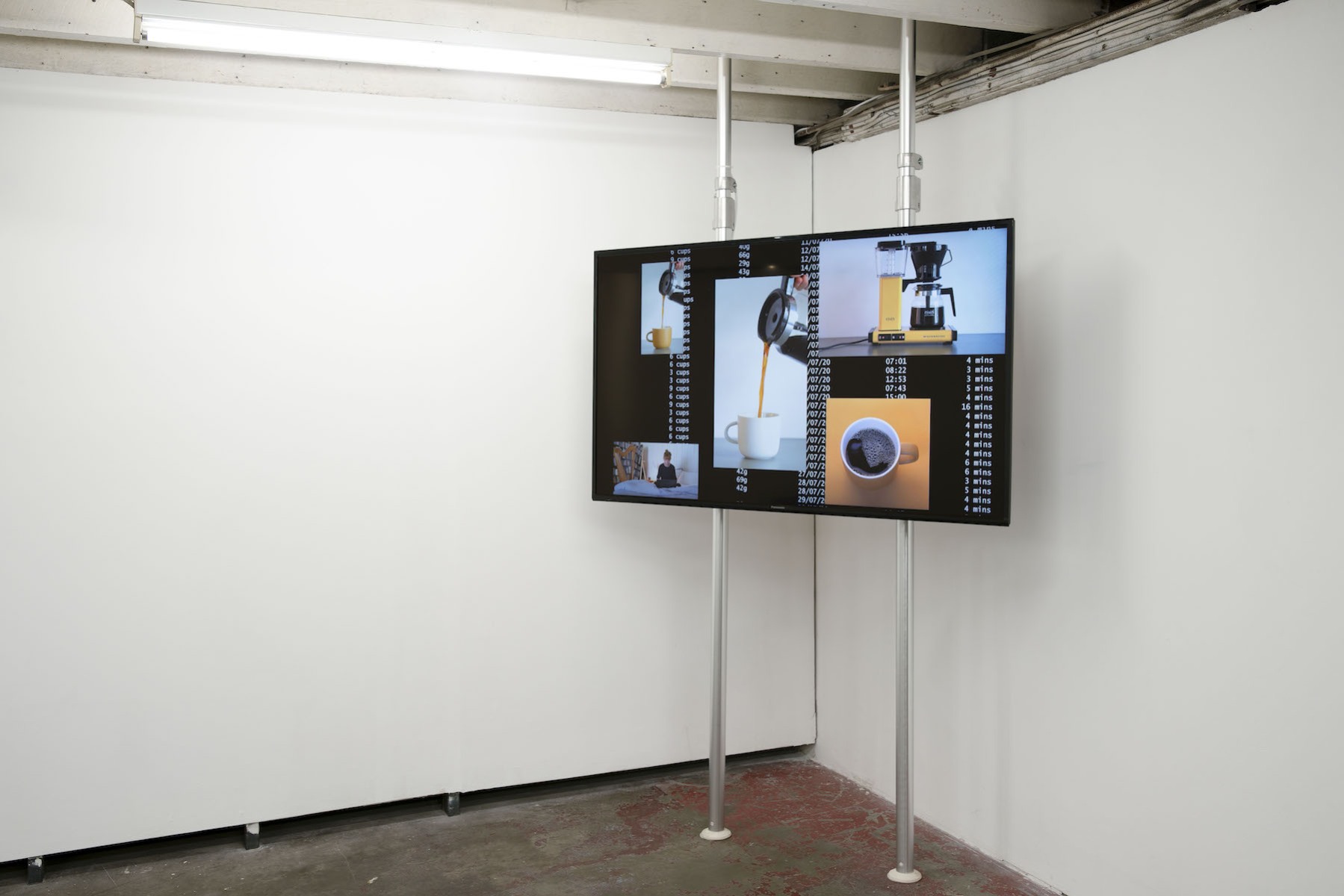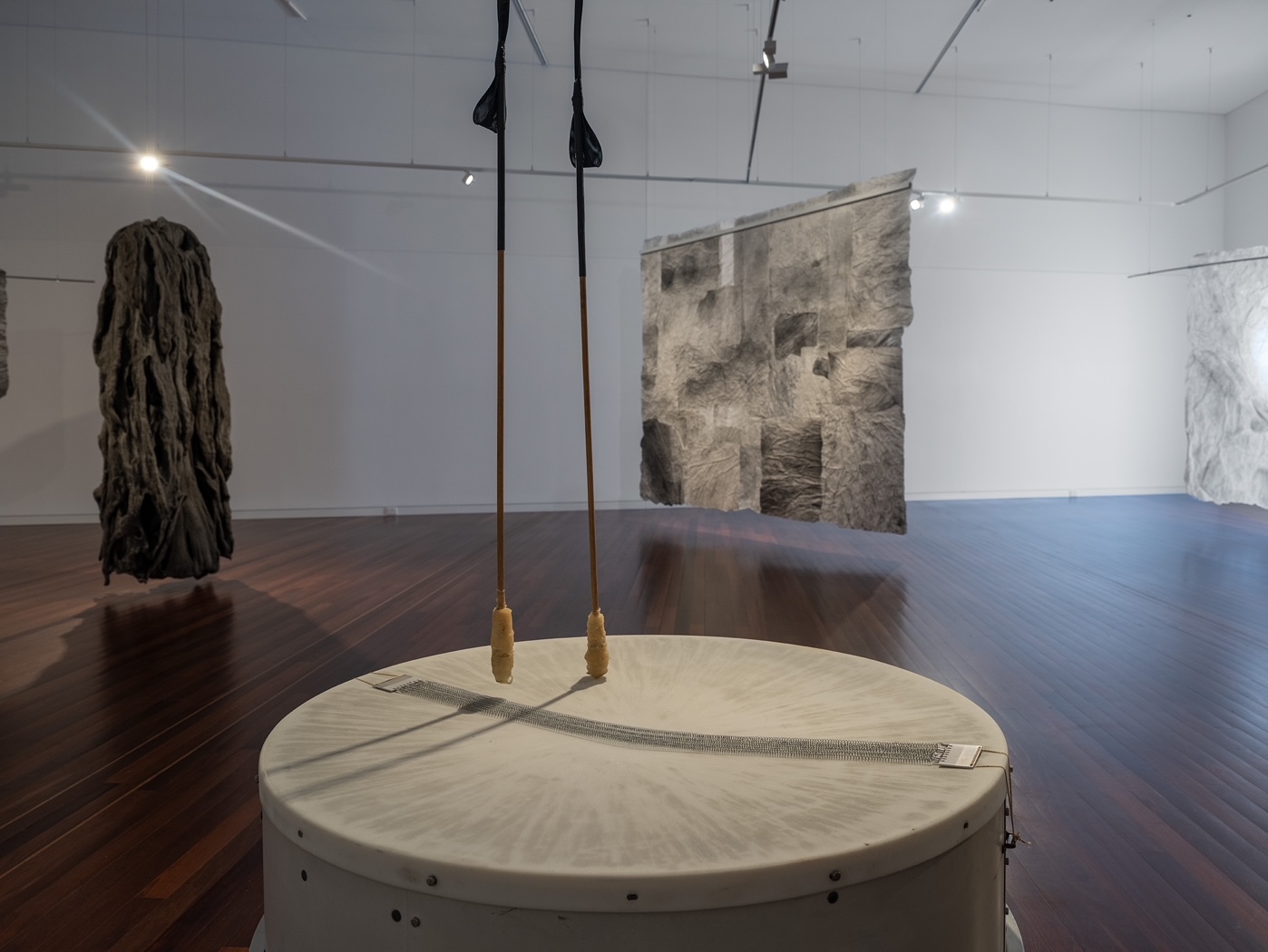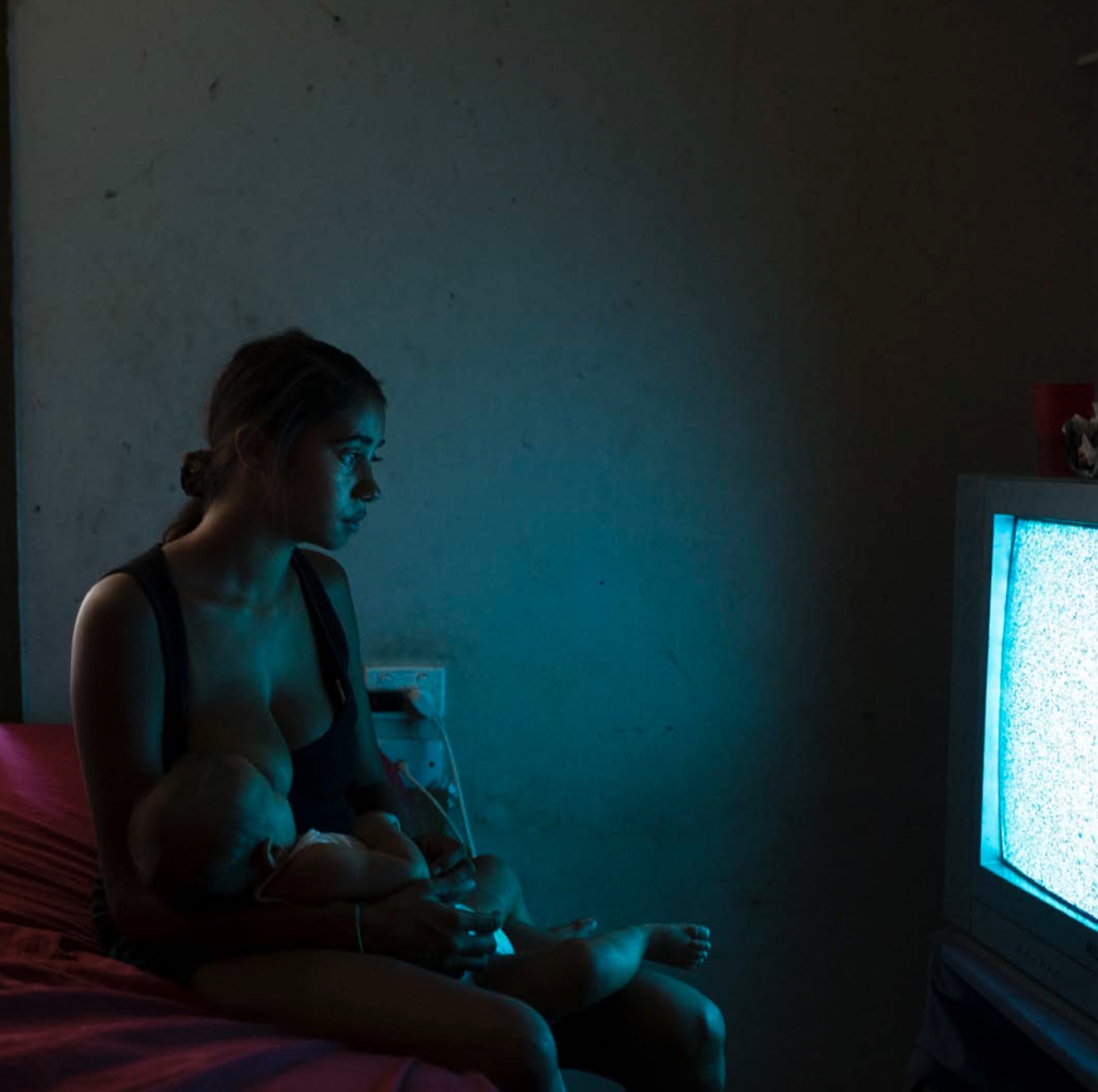Simone Hine’s theoretical premise for Amateur speaks of two things: one, that we can never truly drop out of serfdom, or the conditions of labour—for our networked environments codify and commodify just about every action—and two, that the networked content-industrial complex has turned even the most clueless of us into performance artistes.
Luckily for me, Amateur does not serve this theory through any kind of impenetrable self-serving aura, which invariably begets a sense of decorum. Rather, it is openly laid out in a room sheet written by Hine herself. This is good news, since my barometer for whether I will enjoy a show (or not) is usually whether I am laughing within the first minute of entering a fine art establishment, wreck yard, or anything in between . . .
To this point, Hine’sreadymade assemblage After Dylan Ayres (2022), a consortium of colourful rubber bands surrounded by variously flavoured Bang energy drinks, holds an immediately appealing dark humour. A classic case of chaotic Gemini energy, Ayres is a popular teen YouTuber whose magnum opuses include videos such as, I Filled My Human Hamster Ball With Diet Coke And Mentos, Putting Random Stuff In The Microwave, I Made A Boat Out Of Spray Foam and How To Make A Giant Rubber Band Ball (OVER 700LBS!!). Rubber band videos are his specialty. For some incongruous reason, making these balls has earned him a sponsorship from the masterminds behind Bang, whose oversized cans he is seen sipping throughout his extensive body of work. (Hine tells me Bang even comes in a birthday cake flavour, which she could not bring herself to finish).
This ode to Ayres not only implicitly critiques video content production as one of the most ubiquitous commodities of our networked era, but also provides insight into its formal resemblance to early video performance art of the 1970s and 80s. Somehow, by watching Dylan Ayres roll a giant rubber ball down a suburban street, Hine’s encyclopaedic art mind was reminded of Peter Fischli and David Weiss’ rolling of rubber tires in their warehouse spelunk, The Way Things Go (1987). Intrigued by this methodological convergence, Hine decided to revisit one of the first videos she made as an undergraduate, Deep Time (Media) (1996–2022). In Amateur, this is installed sideways inside a plastic bucket filled with red Orbeez. Orbeez are another YouTube gimmick: as smooth orbs capable of absorbing water, they seem to hold a powerful sensory appeal to YouTube audiences. In Deep Time, a pixie-haired Hine sticks similar if not identical glass beads in her mouth, storing as many as possible in her cheeks like a hungry hamster before spitting them back out.
Deep time typically refers to an incommensurable vastness between two time-points, and sometimes also refers to a sense of time circularity, or ever-presence. Which is to say: would the young Hine have released YouTube hits had she been born in the 2000s? Placed side-by-side with the remnants of Ayres’ raw materials, are not the young Hine and Ayres formally and performatively alike?
The complex thing about Hine’s stance on amateurism is her ambiguity. Various definitions of amateur practice conflate it with an absence of financial compensation, a pastime, and a non-profession. Hine’s third and final piece in the exhibition, the video work Quiet Quitting / Always On (2019–22), tackles the idea of being an amateur in so much as being one can signify non-participation in capitalist production. As the tension of the title suggests, quiet quitting—the notion of performing one’s job at the bare minimum level so as not to be fired—may as well be an admission of one’s precarity in the labour market. For this work, Hine learned how to play the harp, but only to the level of a bare minimum understanding of “learning to play the harp.” The piece she performs in the video, she tells me, is the first song harpists typically teach new pupils, and once she learned it for the video, she was done with the instrument. In this way, her harp-playing could only be amateur; she’s not about to hold a one-song concerto anytime soon. Meanwhile, as Quiet Quitting/Always On depicts the artist sleeping, working, texting and thinking in the confines of her bedroom, spliced footage of data documenting the date, time, and grams of coffee produced by Hine’s coffee machine over the past two years scrolls past. The symbol of caffeine as fuel for production creates a kind of circular dialectic back toward After Dylan Ayres.
The most interesting quality of Quiet Quitting/Always On—and I would dare generalise this to encompass Hine’s most recent works—is in fact these long in-development lead times. There is an absorption and preoccupation with immersion, living in and around a process of development, a poetics of deep time-ness. In the end, although Hine openly exposes Dylan Ayres as the symbol of labour commodification that he is, she also relishes in his commitment to the bit, his curious process a parallel universe to her own.
Simone Hine: Amateur will also be open 4–7pm Sunday 27 November 2022.
Alice Maia Rezende is an emerging curator, writer, and researcher focusing on networked and digital media art practice.






